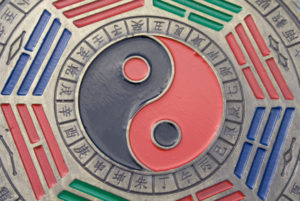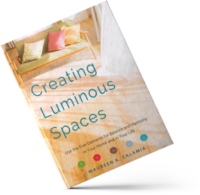 Ever wonder why you get confused when you read about Feng Shui? One book talks about directions, another about symbolism, and still another about arrangement by your front door.
Ever wonder why you get confused when you read about Feng Shui? One book talks about directions, another about symbolism, and still another about arrangement by your front door.
Feng Shui was started over 4,000 years ago in China. Ever since, it has evolved and taken on different perspectives and ideas.
There are many subgroups of Feng Shui teachings, but they predominantly are grouped into traditional (or classical) and modern disciplines. All forms of Feng Shui have the same foundational concepts at their base, including balance of yin & yang, flow of chi and the 5 natural elements (wood, fire, earth, metal and water).
Traditional Feng Shui encompasses the schools of Form and Compass. Few, if any practitioners use just one of these schools. Form School, the earliest version of Feng Shui, seeks to locate the best building site, evaluates the typography of the land through site analysis and taps into the natural positive energy of the site.
Compass School incorporates aspects of time and space. Using precise calculations of direction building faces, occupants birth dates, and the year of building’s construction, the practitioner can then provide individualized recommendations. Eight Mansions is subset of Compass School to help determine the best layout of interior spaces.
Modern Feng Shui was introduced to the West in the 1980’s by Professor Thomas Lin Yun of Taiwan. He developed what is known at Black Hat or Black Sect Tantric Buddhist Feng Shui, also known as BTB.
BTB Feng Shui brought a unique way of looking at a building or property by using a more simplified Eight Mansions, also known as the Symbolic Bagua. Rather than orienting by compass directions, BTB uses what is called “Three Door Entry” –aligning the Bagua to a building using the front door. In addition, BTB Feng Shui incorporates spiritual aspects of Tibetan Buddhism in its ritual, ceremony, and remedies or cures.
Other modern variations have been developed, taking the Three Door Entry concept as their base, including Western, Pyramid, and Interior Alignment schools of Feng Shui.
So now you know why you are confused. My suggestion is to stick with what resonates with you the best. I have studied BTB as well as Classical Feng Shui and I use both in my work!



[…] Although I have been trained in both Traditional and Western approaches, the Luminous Spaces Feng Shui School is based upon BTB, or Black Hat, feng shui. Read more about the different philosophies. […]